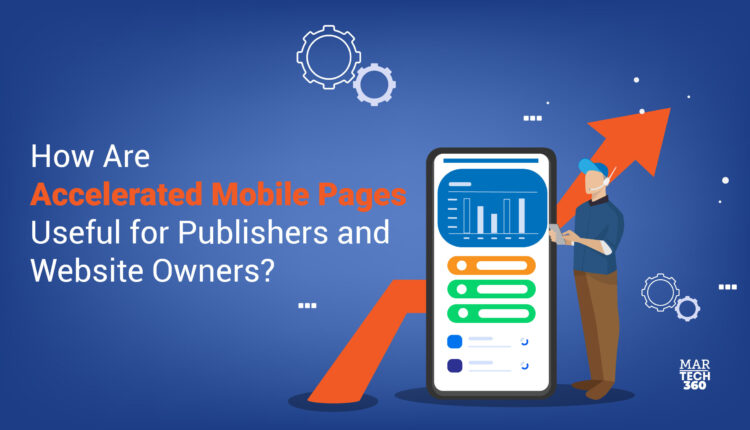The typical attention span of website visitors is two seconds. If the page doesn’t load in that time, readers begin to leave. This is terrible news for publishers because it can result in a higher bounce rate and lower ad income.
Focusing on accelerating mobile site speed is imperative because, according to Google, half of all online traffic is generated by mobile devices. The length of time it takes for your website’s pages to load will affect how satisfied visitors are with the time they spend on your site.
This is why Google started an open-source project called Accelerated Mobile Pages (AMP) to address this pressing issue. So, let’s get started!
What is Accelerated Mobile Pages (AMP)?
Google started the open-source project Accelerated Mobile Pages (AMP) to make sure that mobile web pages load as quickly as possible. By enabling publishers to make speedier web pages and ads that are consistently quick and high-performing across devices, it attempts to improve the user experience on online pages.
Since its release, top Ad Tech and CMS providers have produced over 1.5 billion AMP pages.
Javascript and HTML/CSS usage are restricted on AMP pages for the best speed, which leads to quicker page rendering. Additionally, AMP pages are supported by the Google AMP cache, which contributes to quicker Google Search page loads.
Four Eminent Benefits of Accelerated Mobile Pages
 Faster Loading Pages: It’s not a head-scratcher to guess that one of the main benefits for mobile users is website pages developed with AMP. Faster loading pages on mobile devices means a website page has a lightning-fast load speed otherwise it would just defy its name and purpose, wouldn’t it? Most of a website’s traffic comes from mobile devices and many mobile visitors have reportedly quit websites that took longer than 3 seconds to load. But by adopting AMP publishers and website owners can reduce mobile abandonment and boost their conversions.
Faster Loading Pages: It’s not a head-scratcher to guess that one of the main benefits for mobile users is website pages developed with AMP. Faster loading pages on mobile devices means a website page has a lightning-fast load speed otherwise it would just defy its name and purpose, wouldn’t it? Most of a website’s traffic comes from mobile devices and many mobile visitors have reportedly quit websites that took longer than 3 seconds to load. But by adopting AMP publishers and website owners can reduce mobile abandonment and boost their conversions.- SEO Ranking: Accelerated Mobile Pages assists site owners in reducing the page load time, improving the user experience, and increasing the possibility of mobile visitors staying on the site much longer than merely 3 seconds. Page load time is something that is often considered in the end but is significantly important for SEO. As the AMP project is led by Google, AMP pages are more favored in Google’s search algorithms. AMP site pages also have a notable impact on Search Engine Results Pages (SERP). For example, if two websites have similar SEO rankings, the one with the fastest page load time is prioritized.
- Lowered Bounce Rates: A website’s success largely depends on its ability to keep visitors engaged. The faster your website loads the more it will encourage visitors to stay on your site for long and simultaneously lower the bounce rate. However, AMP implementation is not the most important ranking factor for your SEO efforts but again a lower bounce rate makes search engines believe that your pages deliver on their promises. Improved load times will further encourage visitors to stay on your site long enough to sign up for a newsletter or make a purchase bringing in more conversion figures.
- Increased Visibility: A huge number of the online population tends to seek AMP pages that have faster loading speeds. AMP site links are green in color in the search results. The color highlights and symbols are likely to have increased click-through rates. Your website or a particular site page has the ability to stand out on the SERP.
How Do You Implement Accelerated Mobile Pages?
 To implement Accelerated Mobile Pages (AMP), you can follow these steps:
To implement Accelerated Mobile Pages (AMP), you can follow these steps:
- Learn about AMP: Understand what AMP is and how it works. AMP is an open-source framework that allows you to create mobile web pages that load quickly.
- Choose a platform: Decide on the platform you will use to create and manage your AMP pages. Popular options include WordPress, Drupal, and custom HTML development.
- Install the AMP plugin: If you’re using WordPress, install the official AMP plugin. This plugin provides the necessary functionality to create and validate AMP pages.
- Validate and optimize: Validate your AMP pages using the AMP validator tool. This tool checks if your pages adhere to the AMP specifications. Make any necessary tweaks to ensure compliance.
- Add schema markup: Implement schema markup on your AMP pages to provide structured data that search engines can understand. This can improve the visibility and appearance of your pages in search results.
- Optimize your content: AMP pages have certain restrictions, such as limited JavaScript and CSS. Ensure that your content is optimized for fast loading and a seamless user experience.
- Track and analyze: Set up Google Analytics tracking for your AMP pages. This allows you to track and analyze user behavior and engagement on your AMP pages.
- Test and test again: Test your AMP pages on various devices and browsers to ensure they load quickly and display correctly. Monitor performance metrics such as page load time and user engagement to identify areas for improvement.
- Submit to search engines: Submit your AMP pages to search engines for indexing. This helps search engines discover and display your AMP pages in search results.
- Keep your AMP pages up to date: Keep your AMP pages up to date with the latest AMP specifications and best practices. Regularly monitor and optimize your AMP pages to ensure optimal performance.
Here are some additional tips for implementing AMP:
- Start with a small number of pages and gradually expand your implementation.
- Get feedback from users and make changes as needed.
- Be patient. It takes time to optimize your pages for AMP and see results.
Final Thoughts
It’s important to think carefully before deciding to implement Google AMP on your website.
On the one hand, it helps websites rank well on Google SERP and loads webpages very quickly, but it also has its own set of restrictions.
The AMP project is still in its early stages, making its execution difficult. The AMP-integrated tools might frequently clash with well-known SEO plugins like Yoast for WordPress CMS.
We advise brand-new website owners to build a few test pages in AMP before deciding whether or not to deploy it for their company.


Comments are closed.